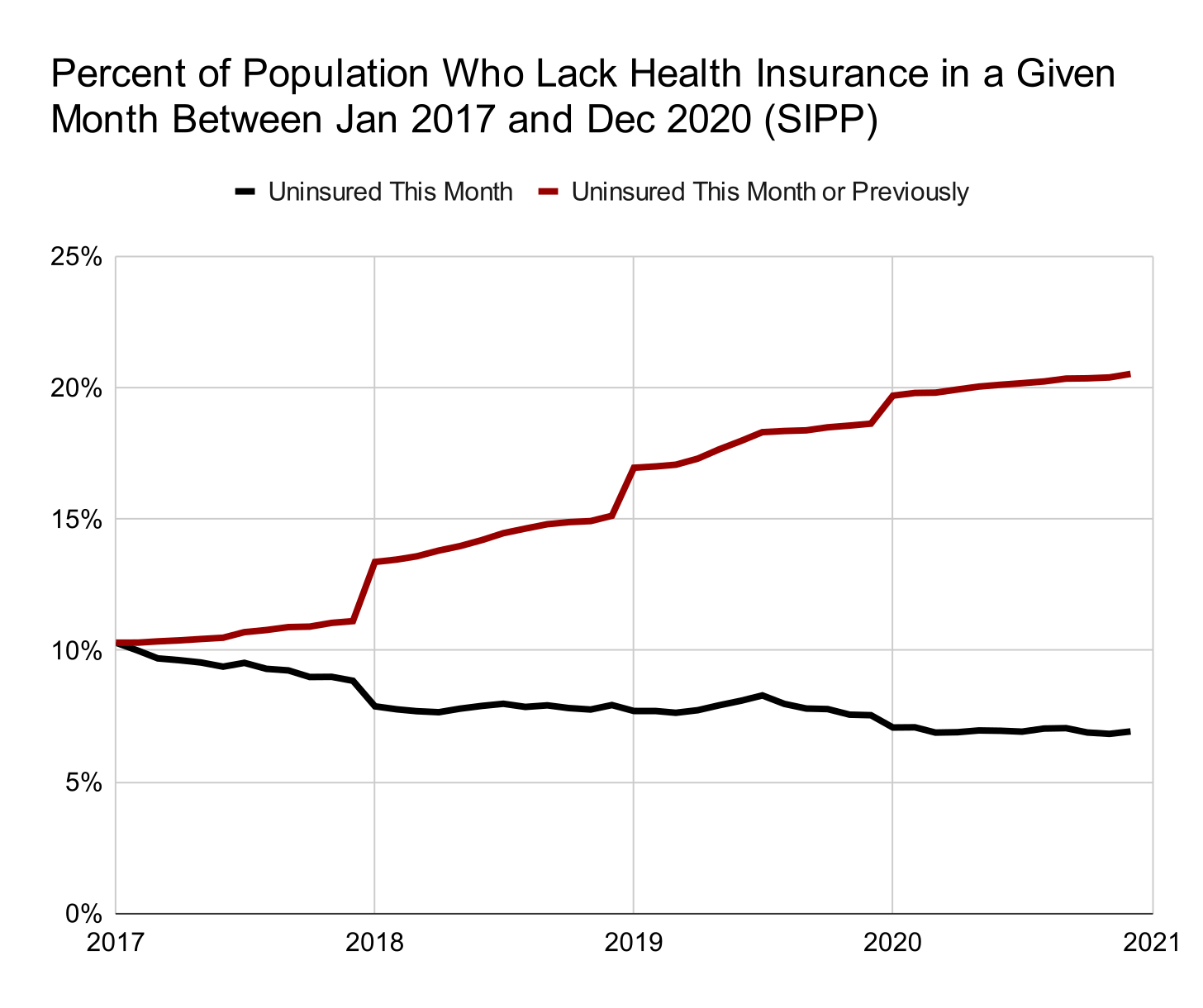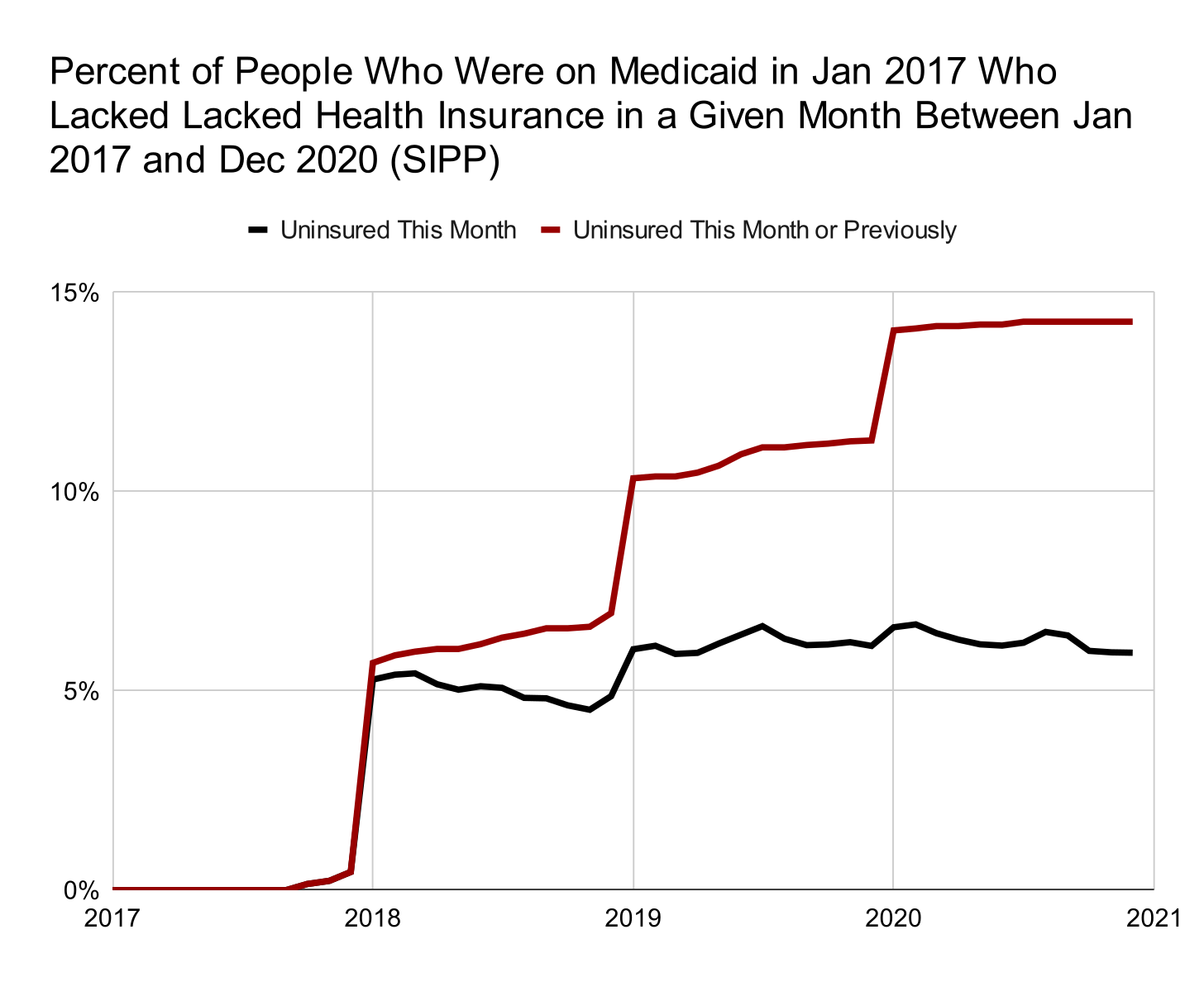Over 20 Percent of People Lacked Health Insurance Between 2017 and 2020
Point-in-time measures obscure just how common health uninsurance is.
CLICK HERE TO READ ON THE SITE.
People who write about health insurance in the United States frequently cite statistics about what percent of the population has insurance. These statistics typically use point-in-time (PIT) measurements that report what percent of the population is insured at any given moment. These PIT measures are useful but can also mislead people into thinking that health uninsurance is a much less common experience than it really is.
To illustrate this problem with PIT measures, I used the longitudinal Survey of Income and Program Participation (SIPP) to determine what percent of the population was uninsured in any given month between January 2017 and December 2020 and what percent of the population was uninsured at any point between January 2017 and December 2020.
The black line is the PIT measurement that is most commonly reported. It shows that in a typical month, around 7 percent of the population is uninsured. The red line is the longitudinal measure and it shows that, over these four years, around 21 percent of the population was uninsured for at least one month. New uninsurance spells are most common in January of each month, which is what you would expect as health insurance plan years typically end in December.
Here is the same graph but for non-elderly adults.
For non-elderly adults, around 27 percent were uninsured for at least one month between January 2017 and December 2020.
Finally, here is the same graph but for people who were on Medicaid in January 2017. Initially, this group has a 0 percent uninsurance rate because they are all on Medicaid. But over time, we can see that they also frequently experience uninsurance.
The Medicaid case is an interesting one because, in the health insurance discourse, you frequently hear people say that people on Medicaid are already covered and so various reform efforts would not be beneficial to them. But, as we can see above, this is not true. Today’s Medicaid recipient is tomorrow’s uninsured person. In fact, today’s Medicaid recipient goes on to hold all kinds of insurance statuses in the future.
In general, policymakers and policy commentators frequently fall into the trap of looking at cross-sectional data and assuming that population categories are much more static than they really are. Yesterday’s uninsured are not today’s uninsured and today’s uninsured are not tomorrow’s uninsured. The same is true for the unemployed, the poor, and many other similar groups.
When you patch up the overall system so as to reduce, eliminate, or ameliorate certain economic statuses, the number of people this helps is not the number of people who are in that status at any given point in time. It’s vastly larger than that.
If you aren’t already, please consider supporting our work by donating through ActBlue or Patreon.




